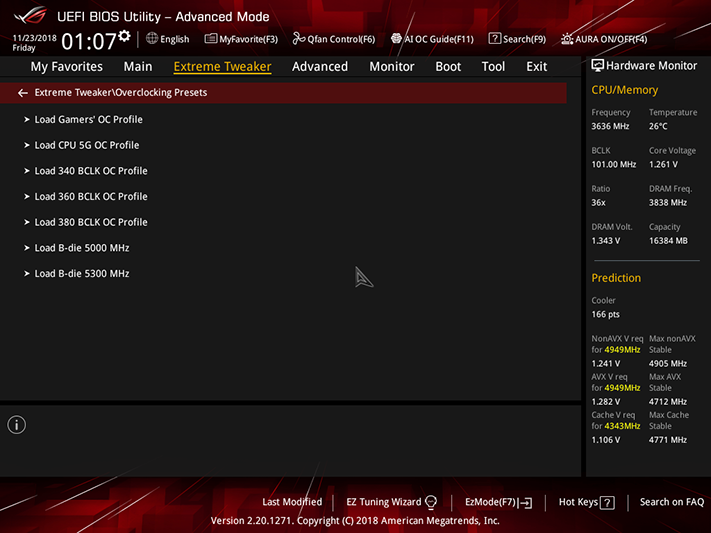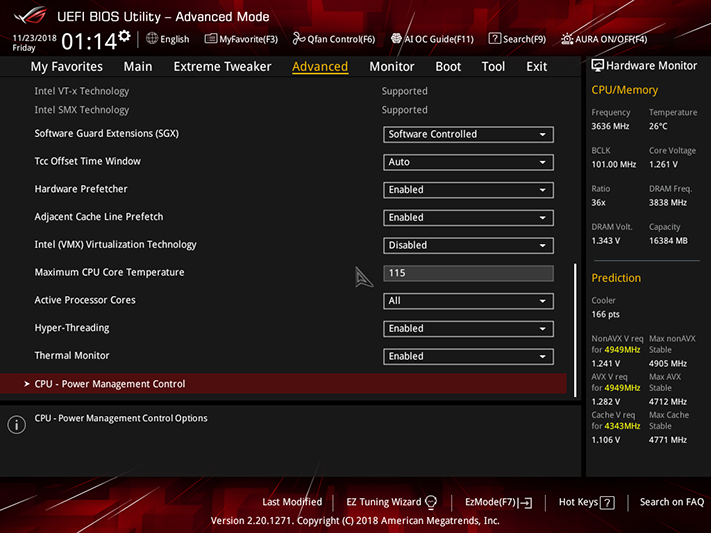Asus ROG Maximus XI Hero (Wi-Fi) Review: For Overclockers Only?
Why you can trust Tom's Hardware
Software and Firmware
Asus AI Suite 3 contains most of the Maximus XI Hero’s apps: Dual Intelligent Processors 5 includes TPU Insight overclocking, EPU Guidance low-energy schemes, Fan Xpert 4 fan control, Digi+ Power Control, and Turbo App application prioritization. Other available tasks include PC Cleaner file remover, EZ Update to poll Asus update servers, a System Information page, and a Windows-initialized version of USB BIOS Flashback for firmware updates.
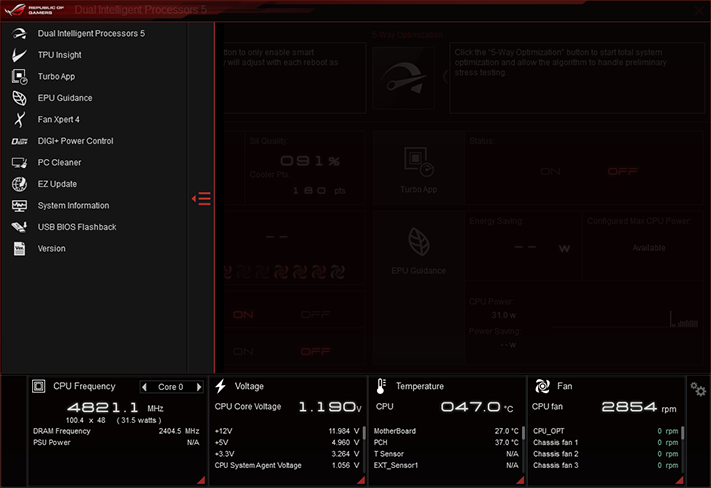


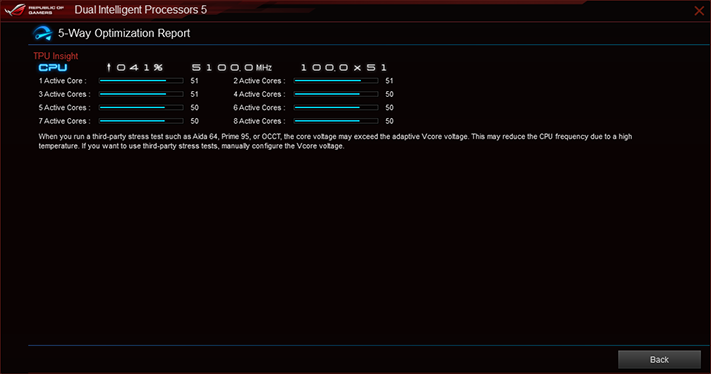
Clicking the AI Optimization icon initiated an overclocking and stability testing algorithm that produced a 5.1GHz clock with up to three cores loaded, 5.0 GHz with more than three cores loaded. We saw a CPU core voltage of around 1.3V with a single thread of Prime95 small-FFTs and 1.28V with 8 threads loaded, but adding additional threads caused the system to crash.



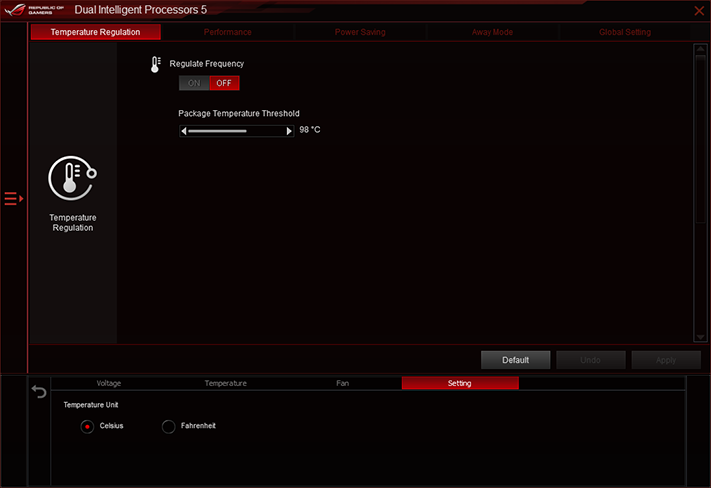
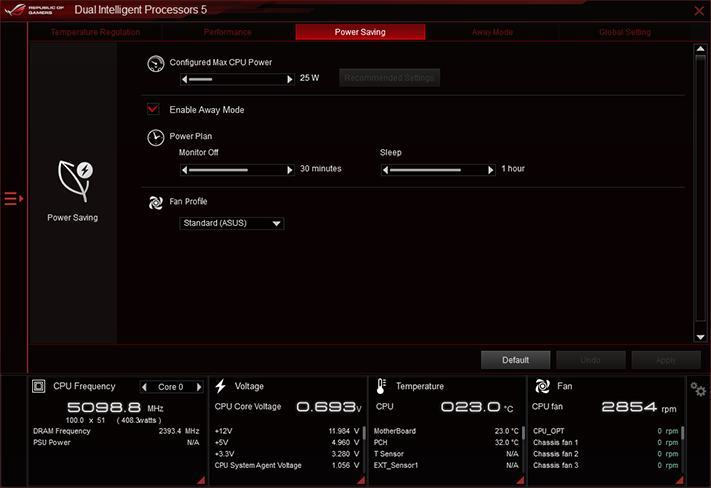
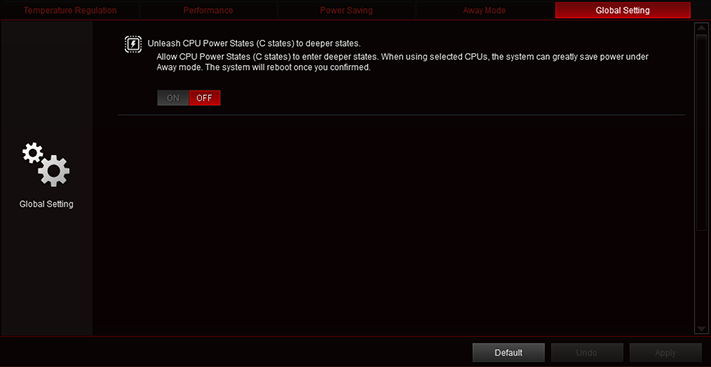
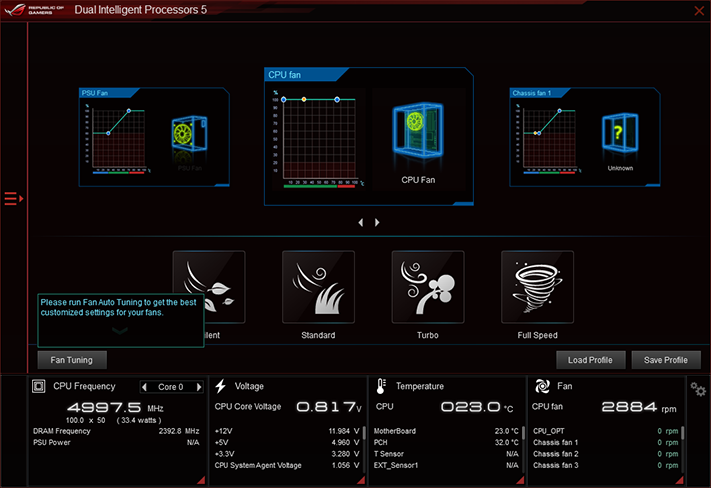

Manual tuning is also available, including CPU Load Line Calibration within Digi+ Power Control.

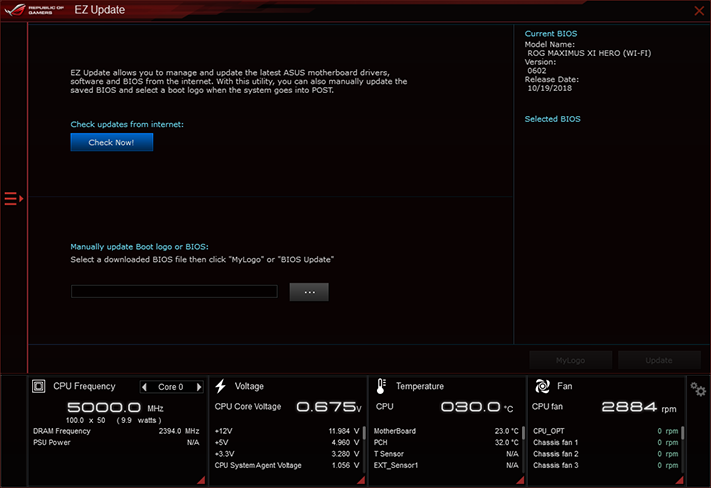
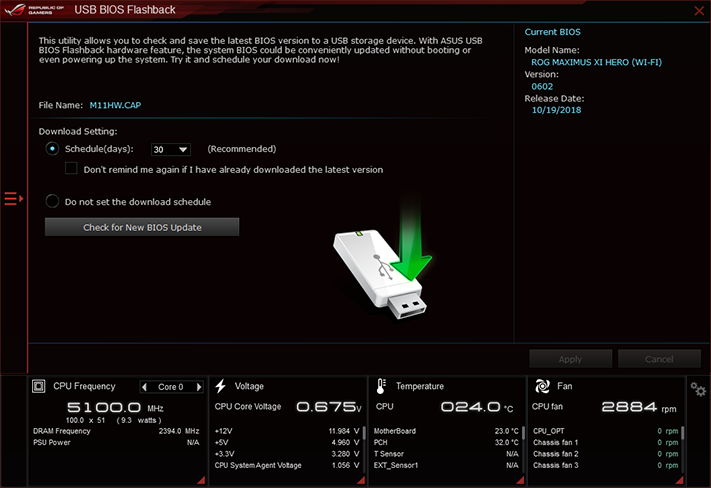
The remaining apps are less exciting, particularly after finding that the “USB BIOS Flashback” tool is nothing more than a way to put firmware on a thumb drive and reboot into a proper flashing mode. It’s the same method we’ve been doing manually with similar effort.
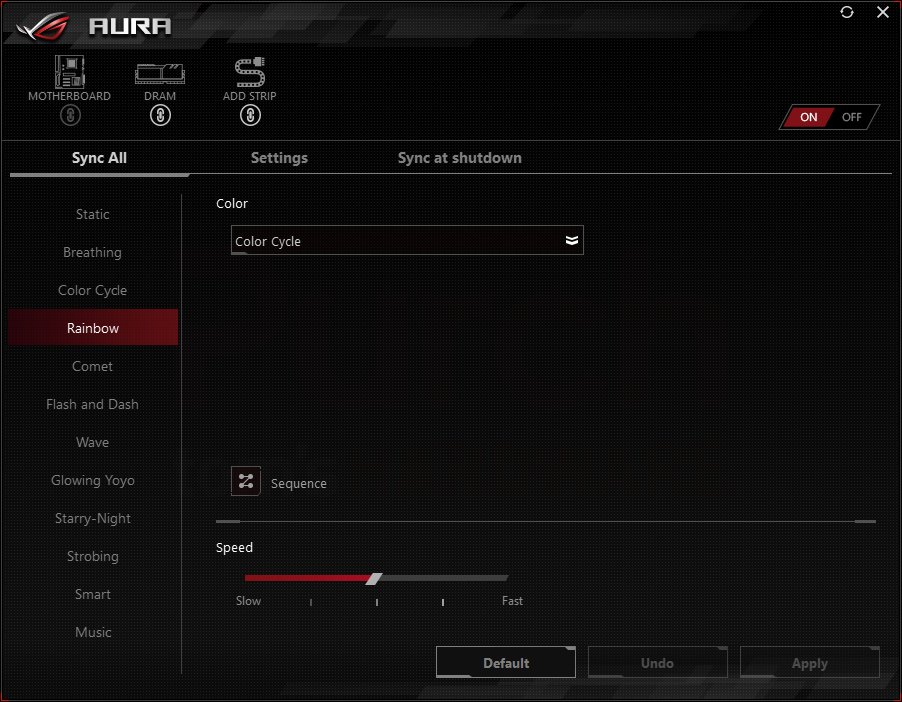
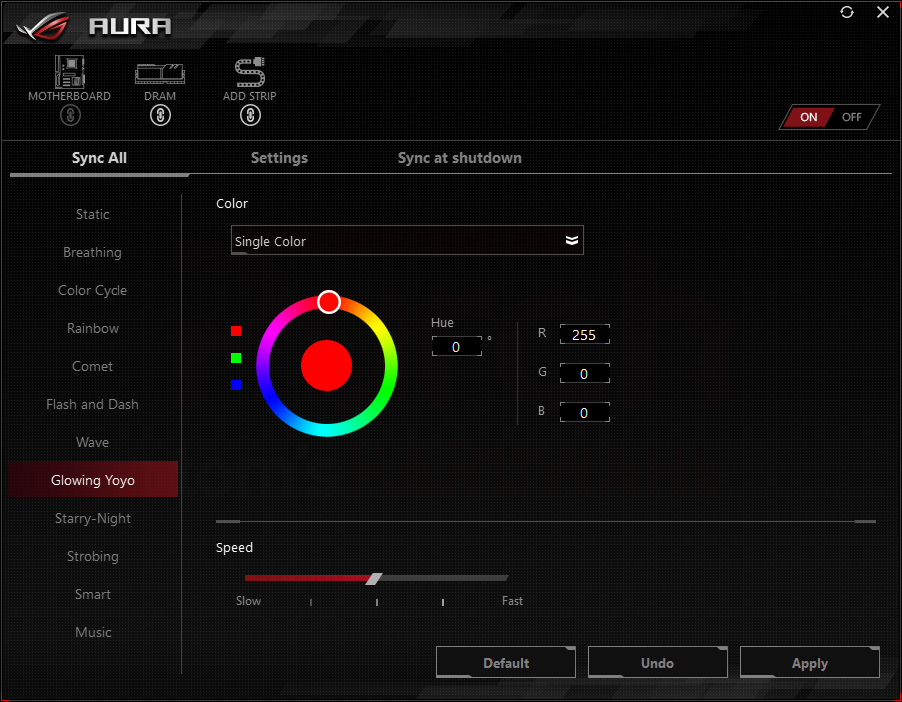
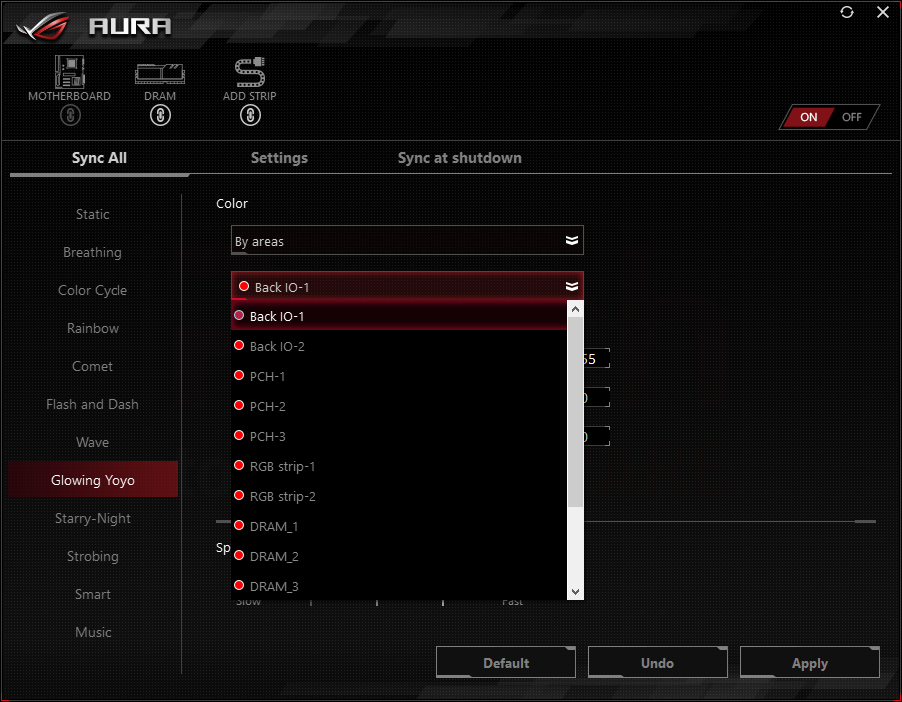
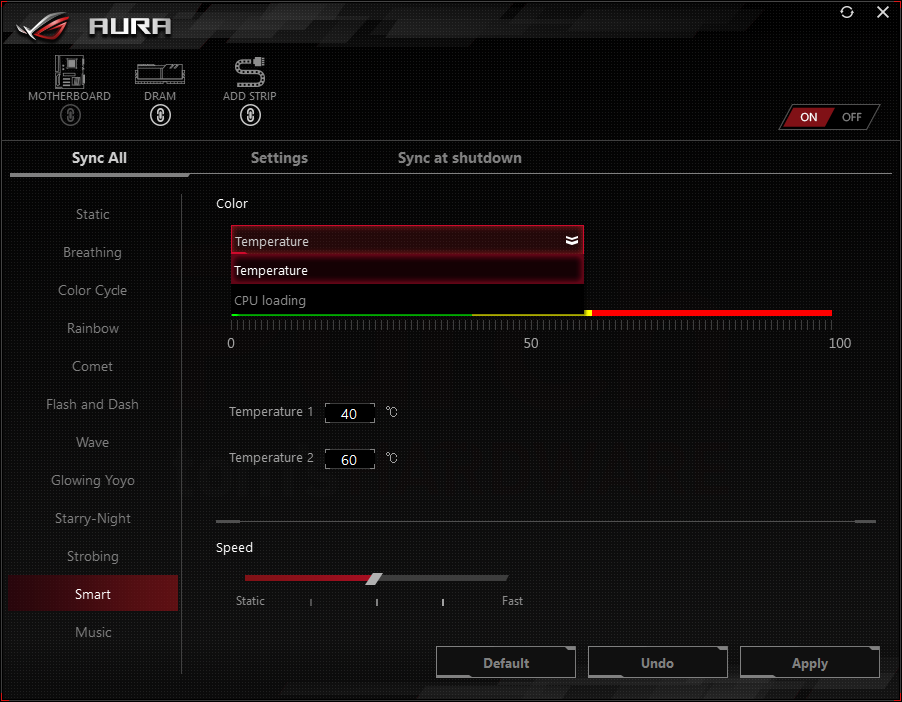
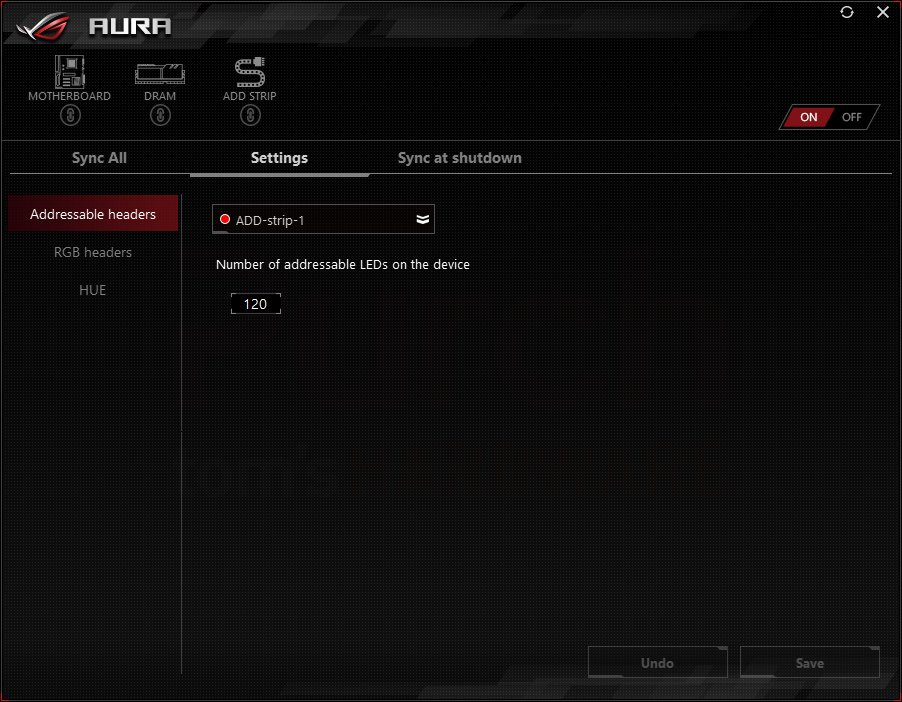
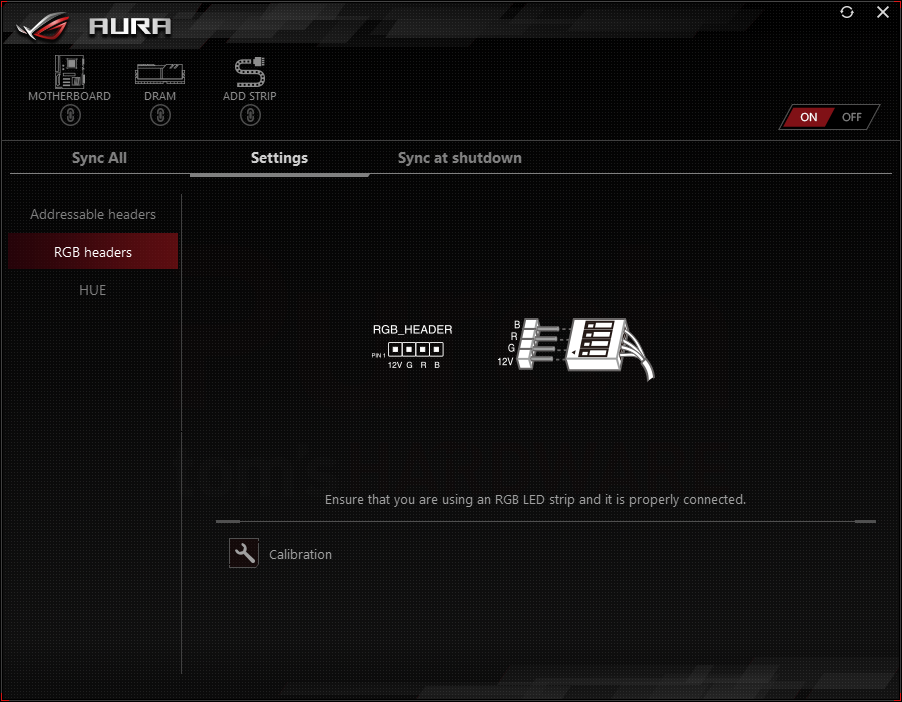

Asus Aura RGB includes a Sync mode that sets all devices to the same scheme but not the same exact timings, which is likely a limitation of our RGB memory. Famed for its compatibility, we included seven screen shots to show most of its available configuration settings.
Firmware
Maximus XI Hero firmware defaults to its Advanced Mode GUI, where the Extreme Tweaker menu includes basic overclocking controls plus submenus with advanced settings. It pushed our Core i9-9900K from its factory 4.7GHz 8C/16T Turbo Boost setting to 4.95 GHz at 1.30V under a full load of Prime95 small-FFTs. It also pushed our DDR4-2933 up to DDR4-3867 at 1.35V. You’ll notice through several of these menus that we’re increasing CPU current loads to their firmware limit, to prevent throttling.
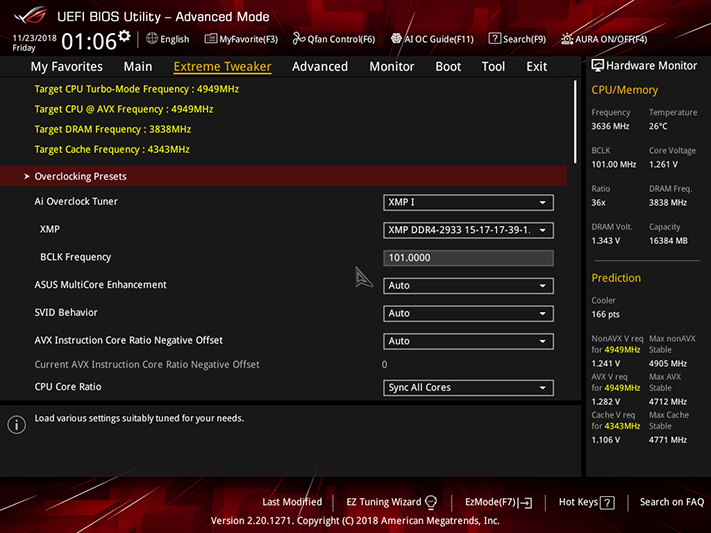

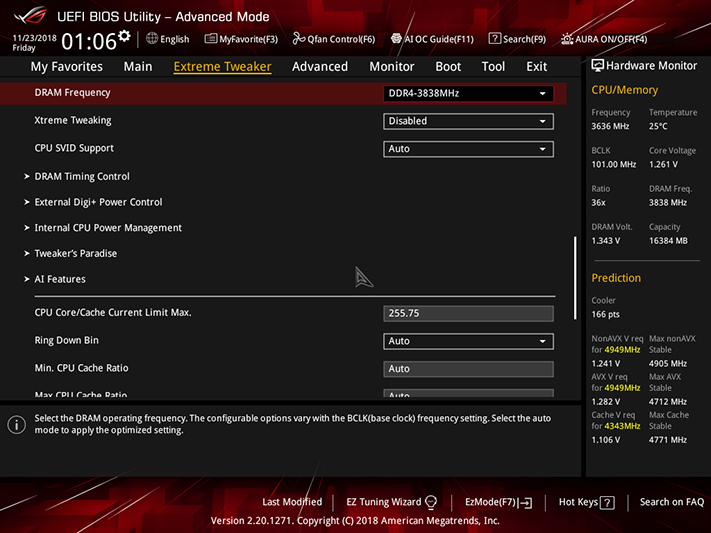

You’ll notice that we set the CPU Core Voltage to 1.28V, which we’ll explain further below, and the DRAM to 1.340V. We found that the average voltage of DIMM slots was 13mV higher than whatever we set, but it was only shown in firmware as being 3mV higher-than-set. We maintain a 1.355V DIMM limit in motherboard overclocking evaluations to assure that no model “gets the prize” by cheating.
Get Tom's Hardware's best news and in-depth reviews, straight to your inbox.
Overclocking Presets is the first submenu of Extreme Tweaker. Seven factory-defined overclocking profiles are found here: The “Gamer’s OC Profile” increased our 8C/16T frequency from 4.7 to 4.8 GHz (2% over stock), left our lightly-threaded maximum at the CPU’s default 5.0 GHz, and advertised a 38 percent overclock on the splash screen at reboot. Meanwhile, the CPU 5G OC Profile pushed our cores to 5GHz at 1.30V…whereupon Prime95 small-FFTs would cause the system to lock up. As for the “percent overclock” discrepancy, it refers to base frequency when Intel Turbo Boost technology is disabled (as if anyone does that).
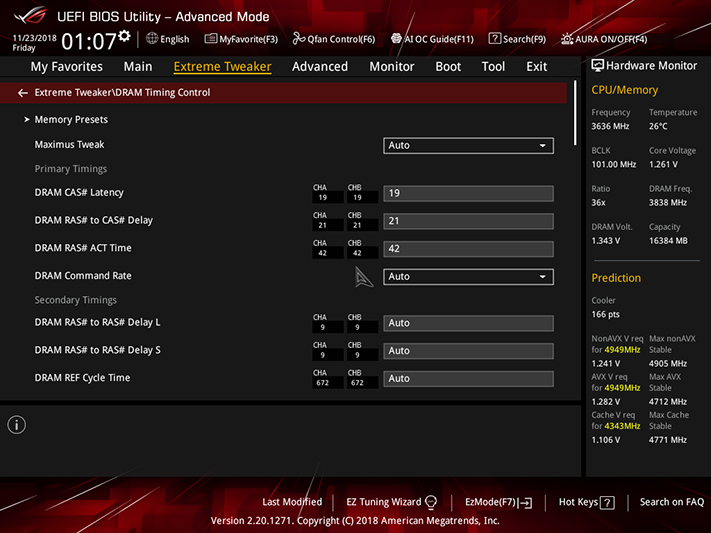


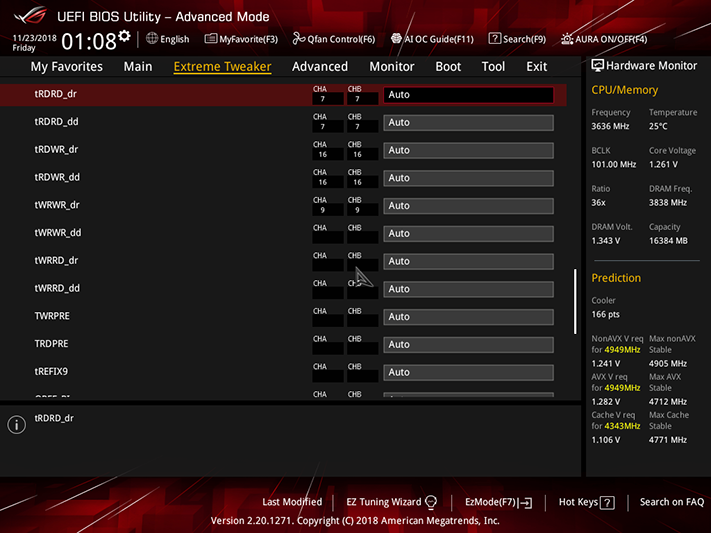

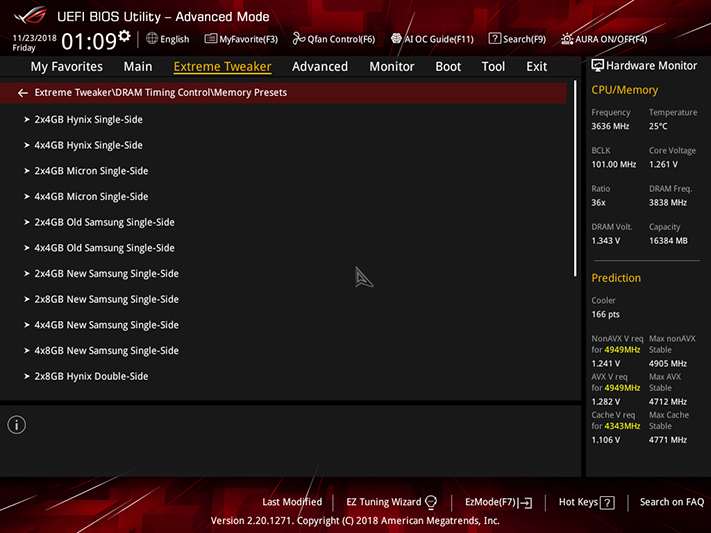
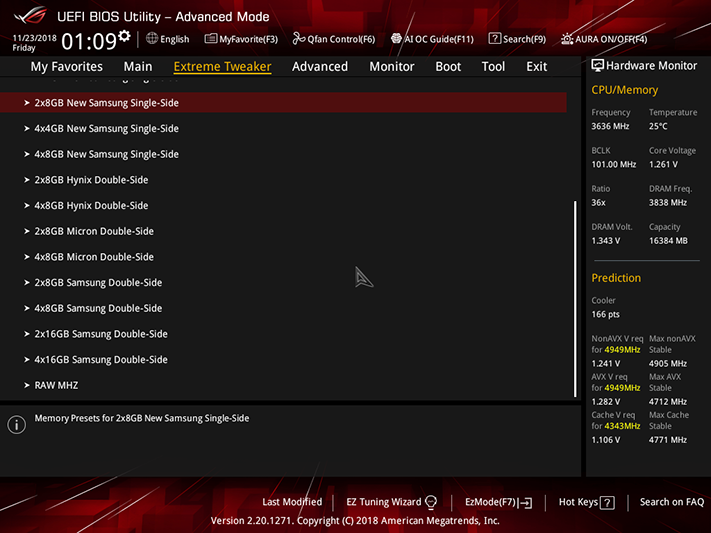


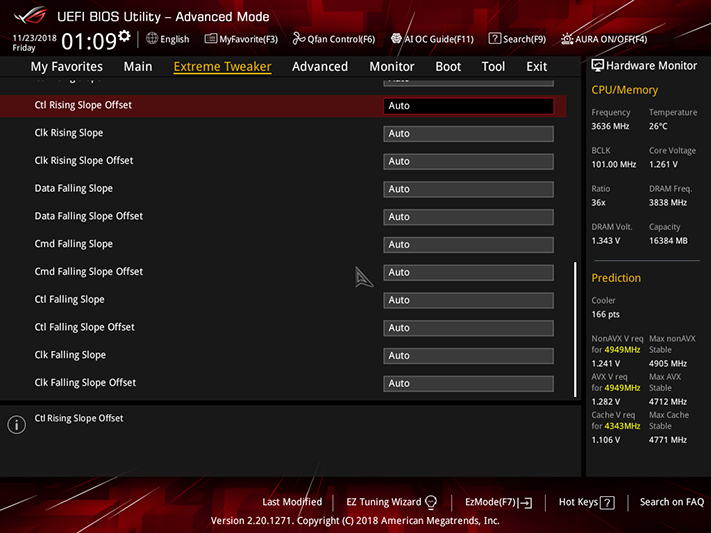
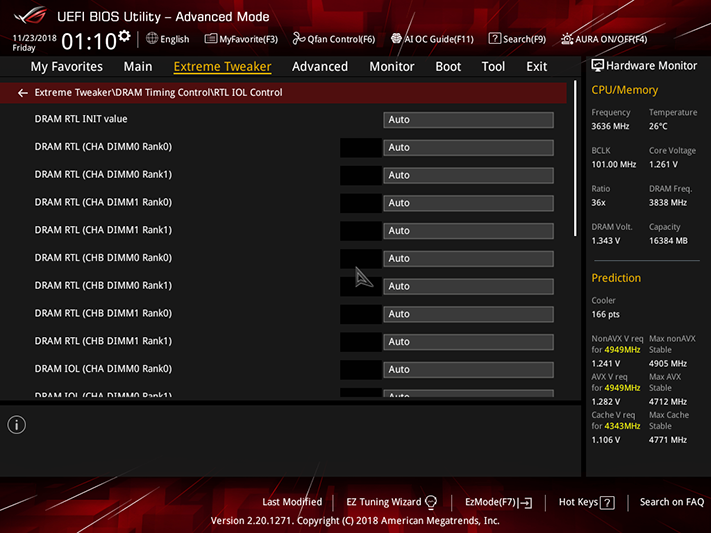
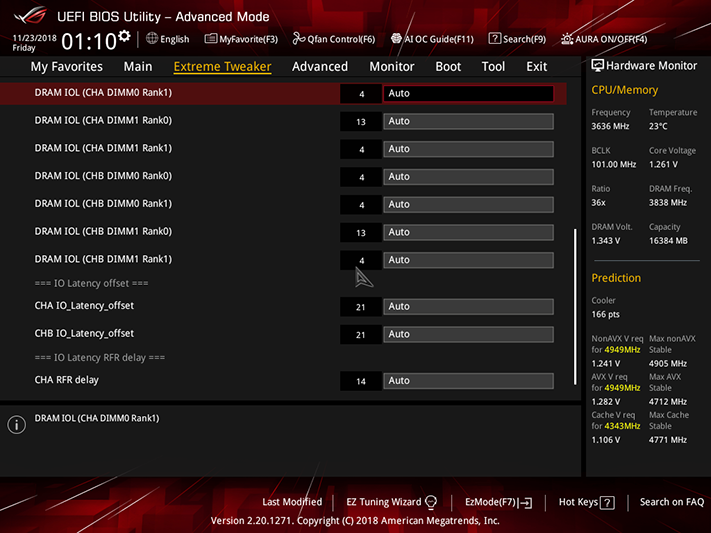

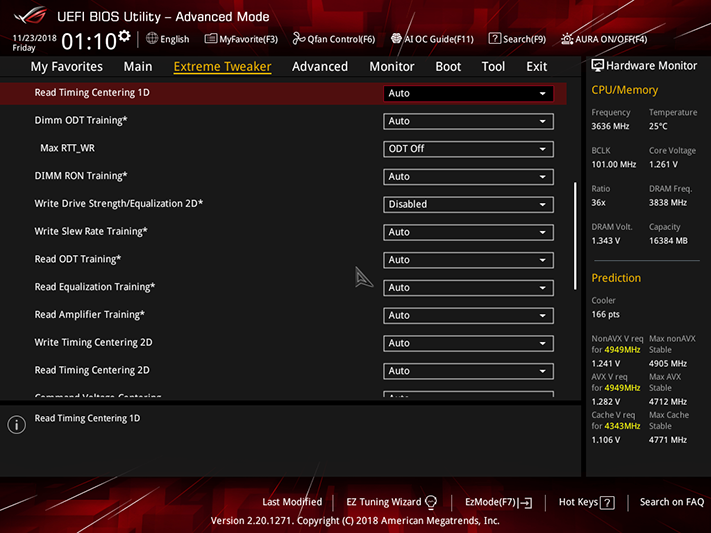

Extreme Tweaker’s DRAM Timing Control submenu includes every timing we can think of, adds a “Memory Presets” sub-submenu filled with factory-defined overclocks for different DRAM IC configurations, and likewise adds submenus for Skew Control, RTL IOL Control, and Memory Training.
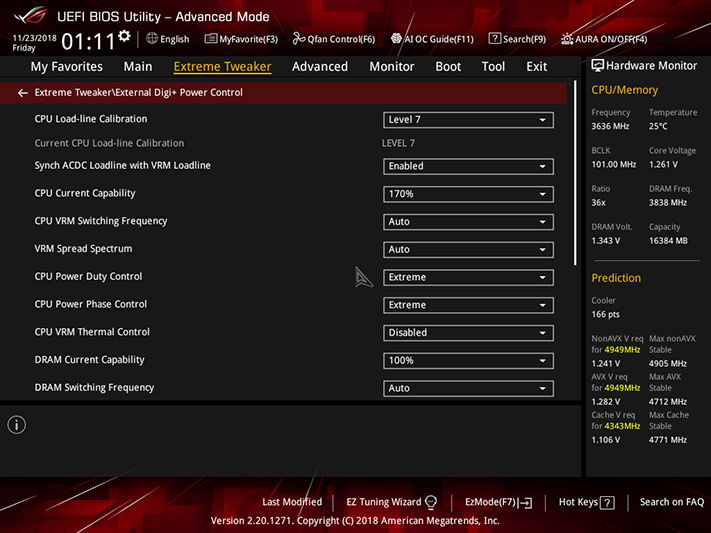
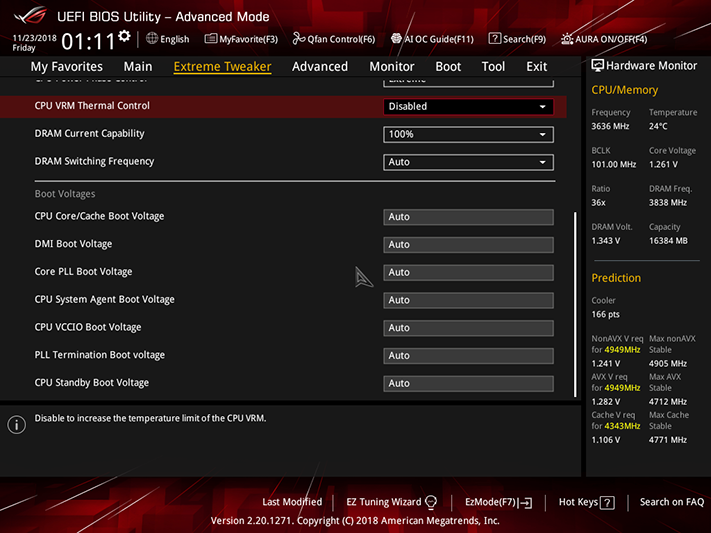
The most important CPU overclock setting is found under the External Digi+ Power Control submenu as “CPU Current Capability”. The board’s default behavior causes our Core i9-9900K to throttle at default settings as it attempts to keep the CPU within Intel’s 95W TDP, so we maxed it out. Meanwhile, we found that the Level 7 setting for CPU Load-line Calibration pushed our core voltage up by around 23mV over the baseline setting when the cores were fully loaded. Since the Level 6 setting allowed CPU core voltage to sag below our intended 1.30V, we combined a 1.280V Core baseline with the 23mV bump of Level 7 Load-line Calibration to reach the 1.30V needed to keep our CPU at 4.95 GHz throughout all stress tests.
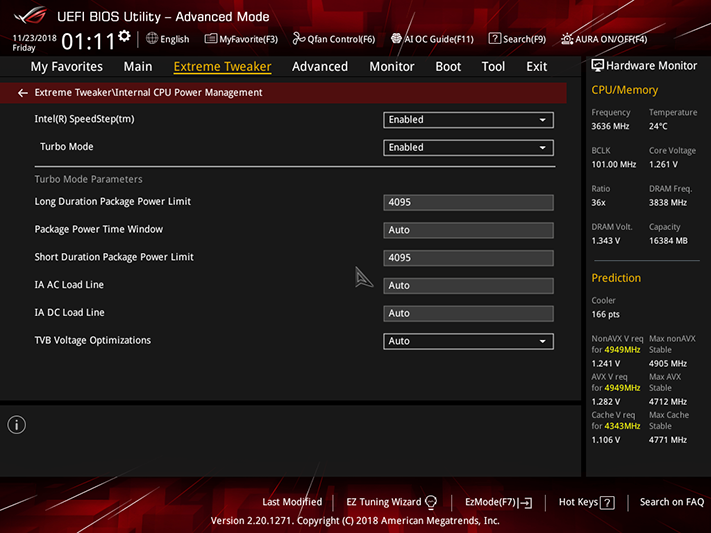





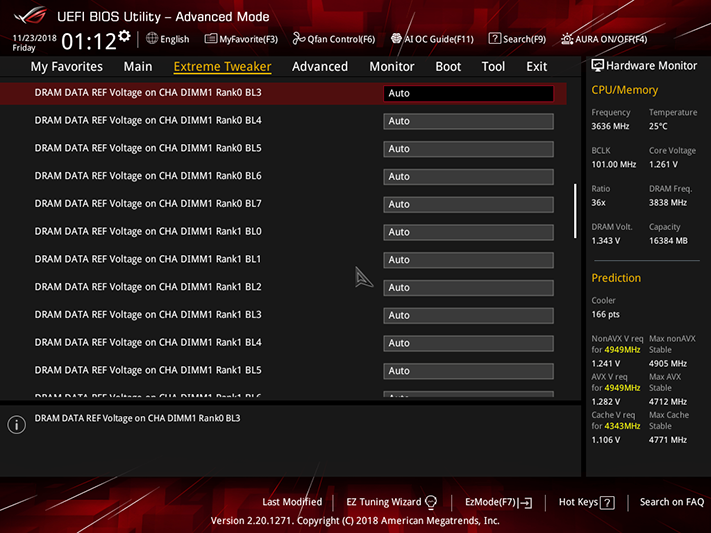
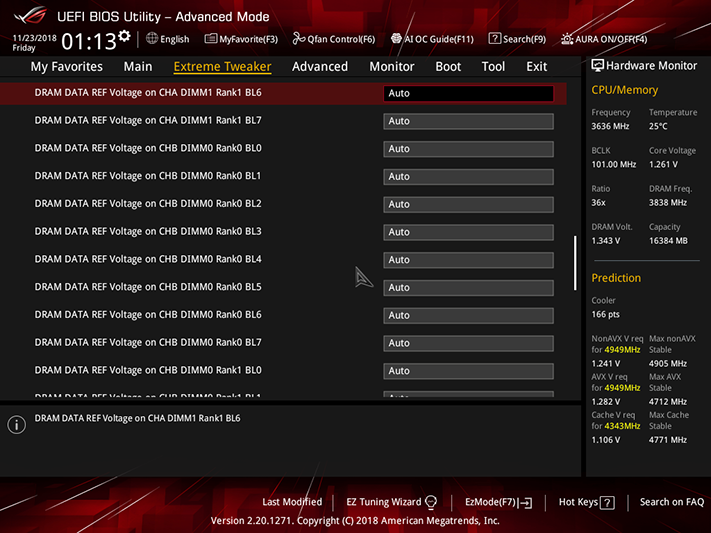
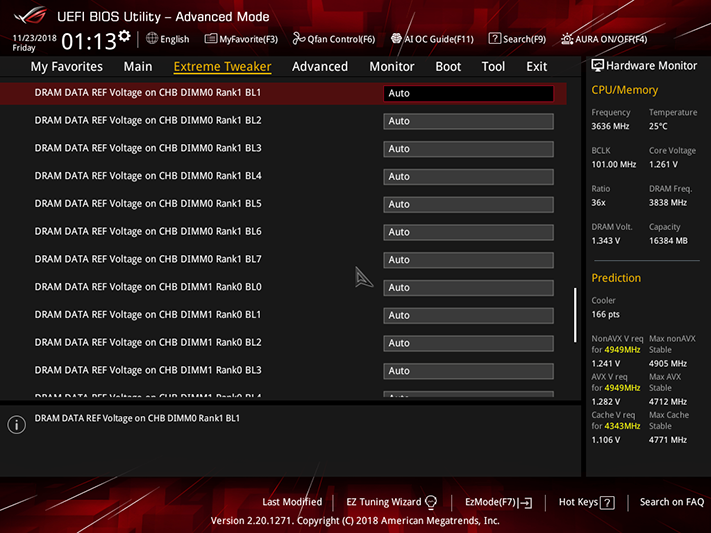
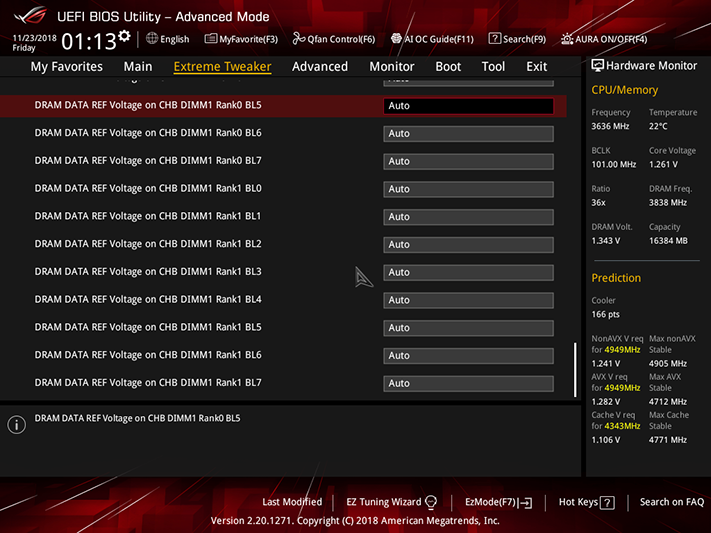
Other submenus include Internal CPU Power Management, where we again set the highest-available power limits, Tweaker’s Paradise with advanced clock and voltage controls, AI Features where we raised the CPU package temperature to match our core temperature limits, and DRAM REF (reference) Voltage Control.
Limiting changes to the Extreme Tweaker menu means that overclocks will still likely encounter thermal throttling: Intel raised the Core i9-9900K’s threshold to 115 degrees Celsius, but the Maximus XI Hero maintains the 100° default of previous processors. Our overclocked CPU peaks at 103 degrees to 104 degrees when everything else is set consistently to other reviewed boards. This thermal threshold can be found in the CPU Configuration submenu of the Maximus XI Hero’s Advanced menu.
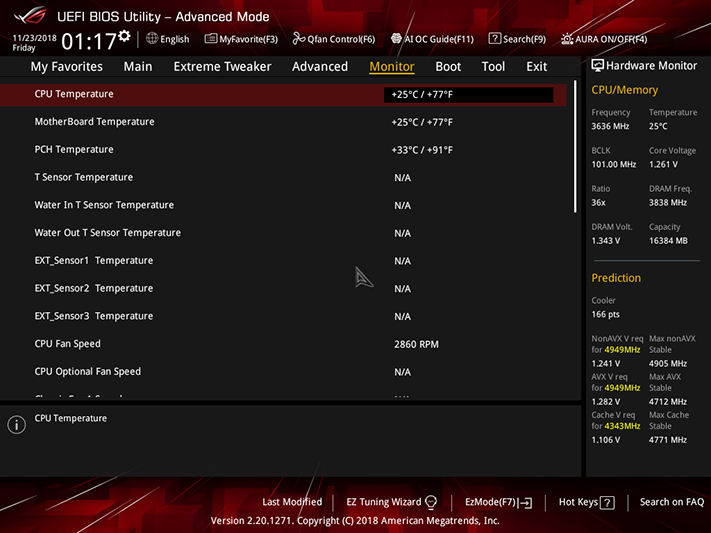
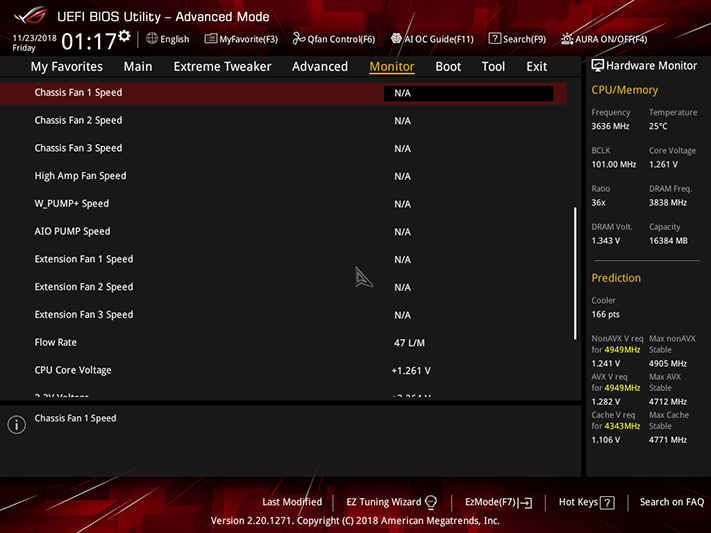
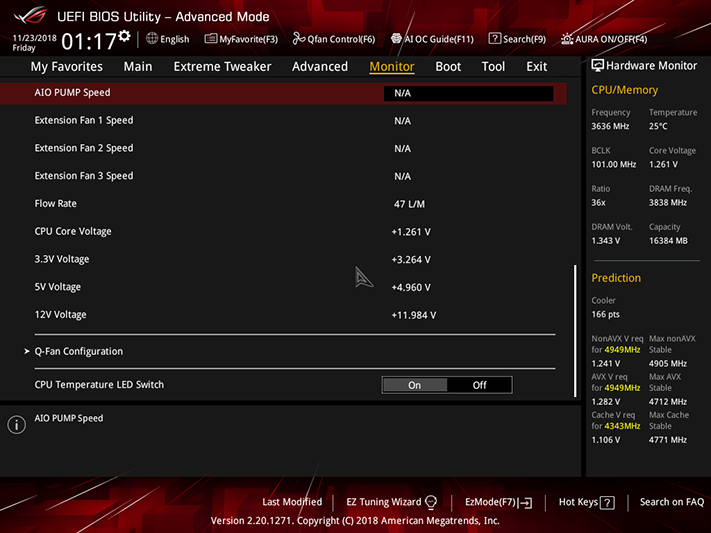
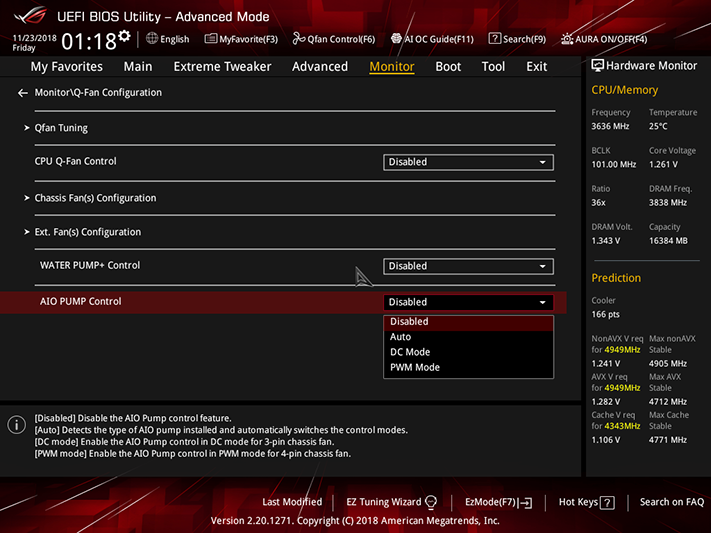
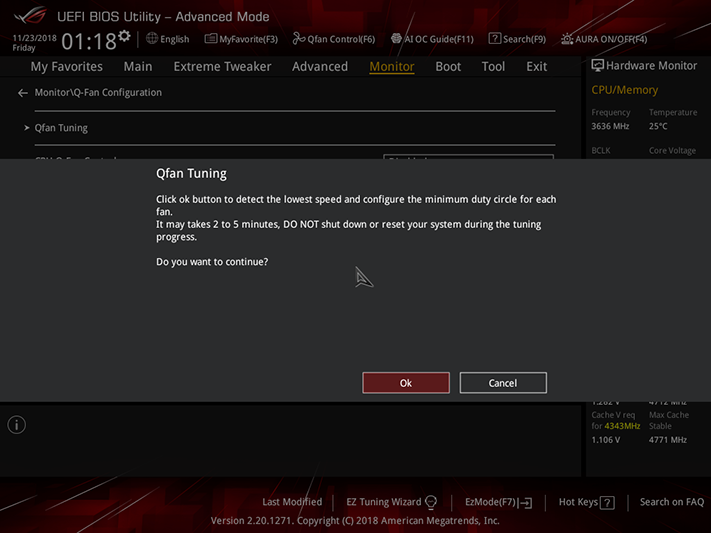

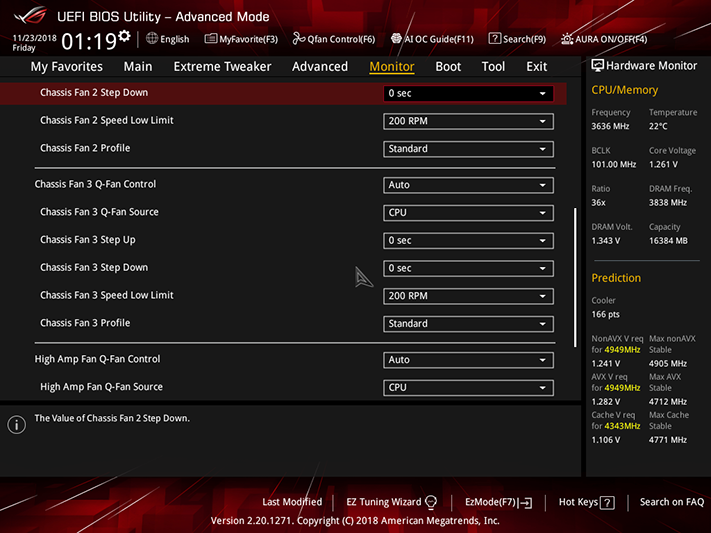


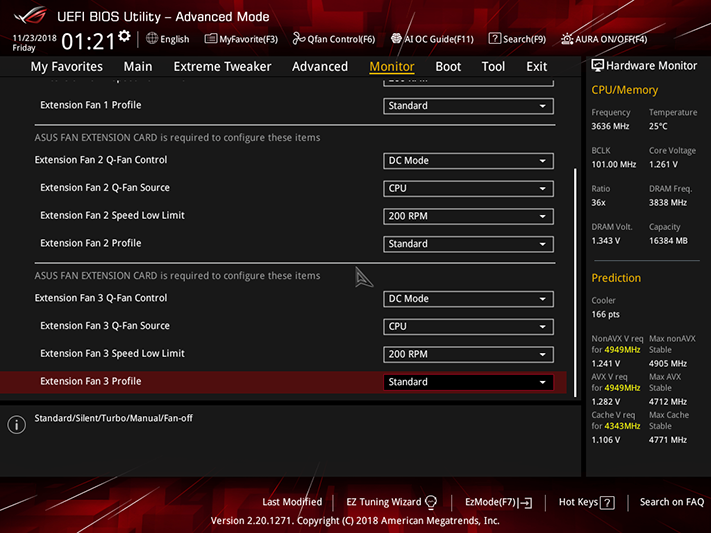
Fan settings are found at the bottom of the board’s “Monitor” menu. Users can select from various temperature-to-RPM curves, use the board’s algorithm to define a custom curve to match their fans, or select their own curves using percentages. All eight headers can be set to either voltage or PWM-based regulation.
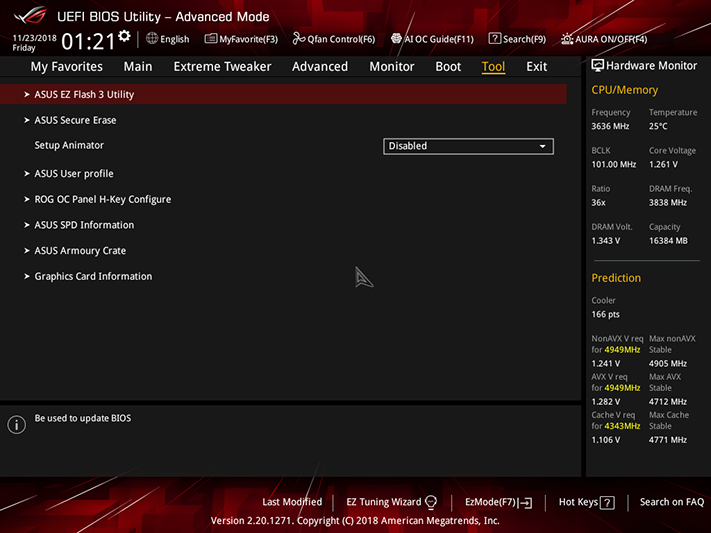
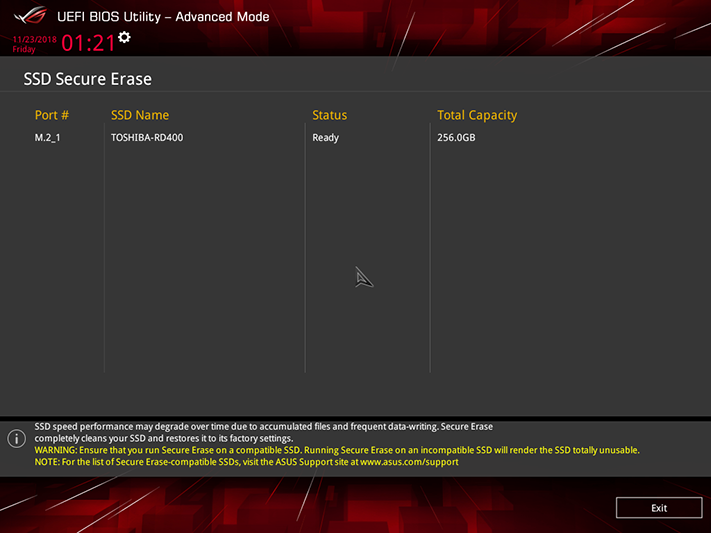
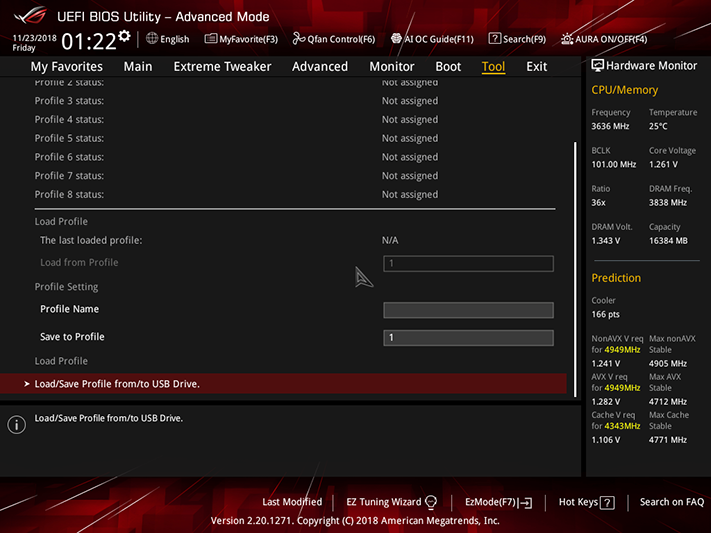
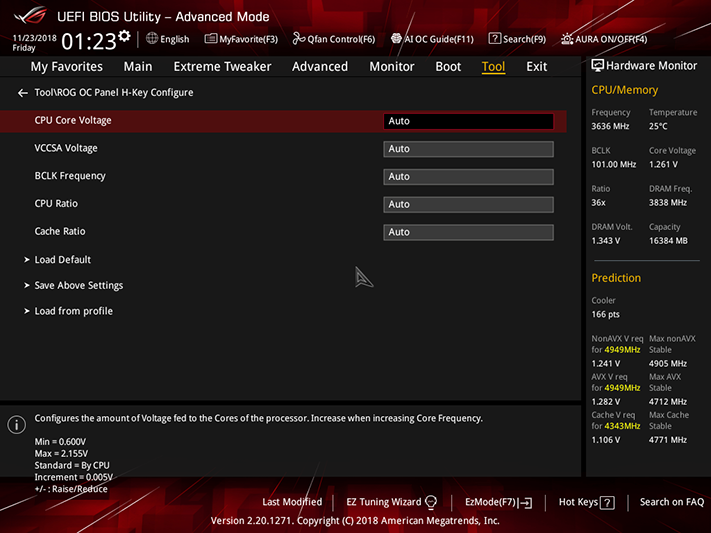
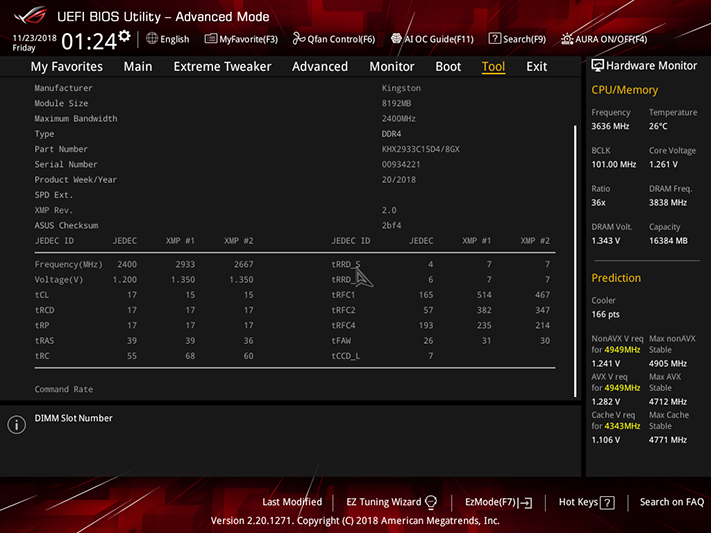
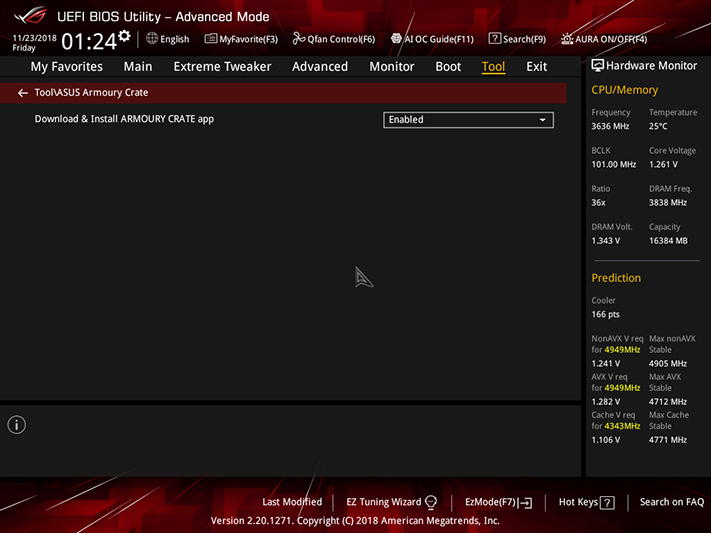

The Maximus XI Hero’s “Tool” menu includes a shortcut to its EZ Flash 3 GUI, Secure Erase for SSDs, registers for up to eight firmware setting configurations as user profiles plus the ability to transfer these to and from a USB flash drive, motherboard configuration settings for Asus’s ROG OC Panel controller, SPD readings from DIMM programming, a setting to disable Asus Armoury Crate downloader, and a Graphics Card Information screen.

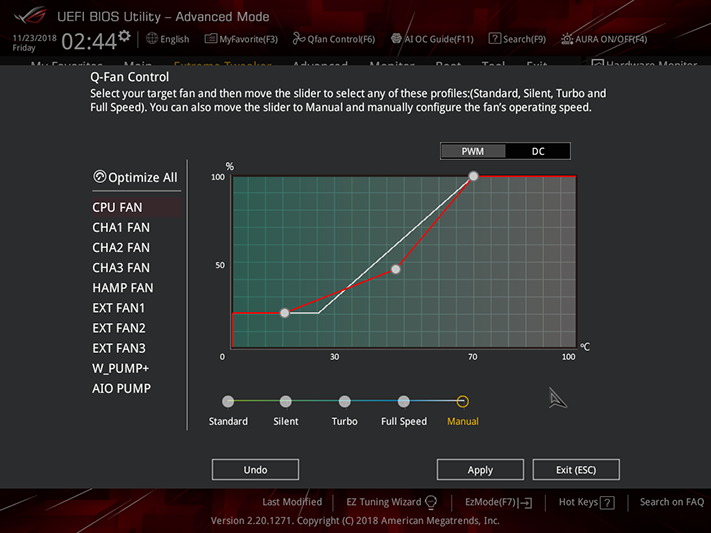
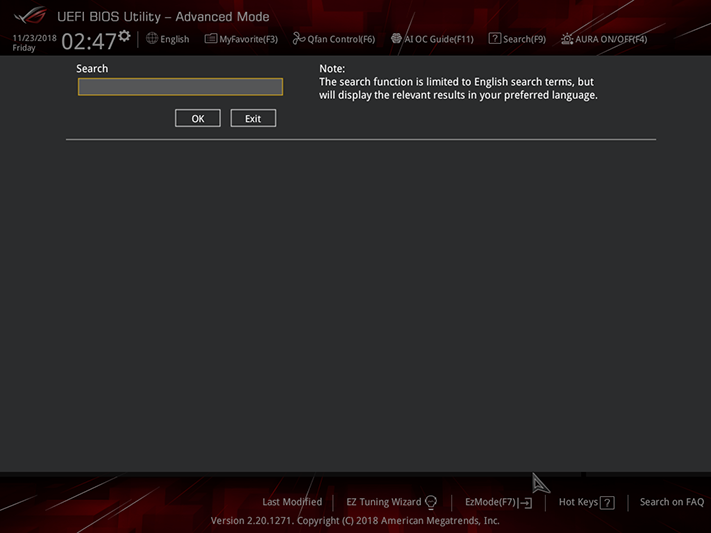
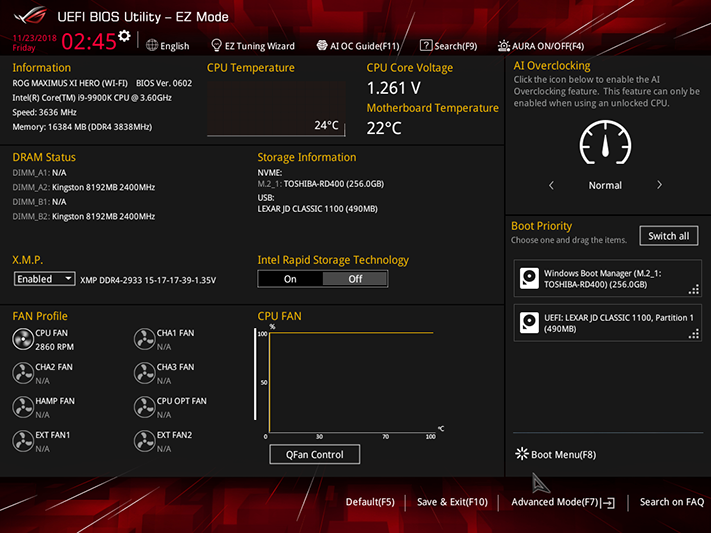
Do more with firmware using your keyboard’s Function keys! F11 brings up Asus’s automatic overclocking guide, F6 a fan control map, F9 a search function for that setting you couldn’t find, and F7 the EzMode GUI.
MORE: Best Motherboards
MORE: How To Choose A Motherboard
MORE: All Motherboard Content
